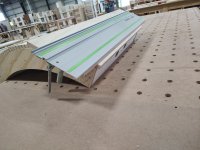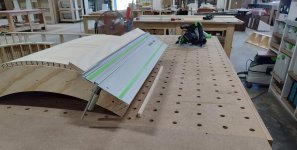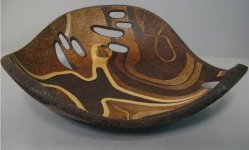Crazyraceguy
Member
- Joined
- Oct 16, 2015
- Messages
- 5,078
This was a perfect case for that defense. I needed to trim the end of the ply after wrapping around a curved corner, but there was no way to position the rail. It needed to be a nice straight cut, since it buts to another piece, no jigsaw.
The rail will not sit on a curved surface, so I made it a temporary flat surface. Tacking along the front edge and wedging under the back, to get it square to the face, worked out perfectly. Because this entire assembly was on an angle, I did clamp the rail in place. You would never know that it was cut "in place" rather than before being attached.
The rail will not sit on a curved surface, so I made it a temporary flat surface. Tacking along the front edge and wedging under the back, to get it square to the face, worked out perfectly. Because this entire assembly was on an angle, I did clamp the rail in place. You would never know that it was cut "in place" rather than before being attached.



